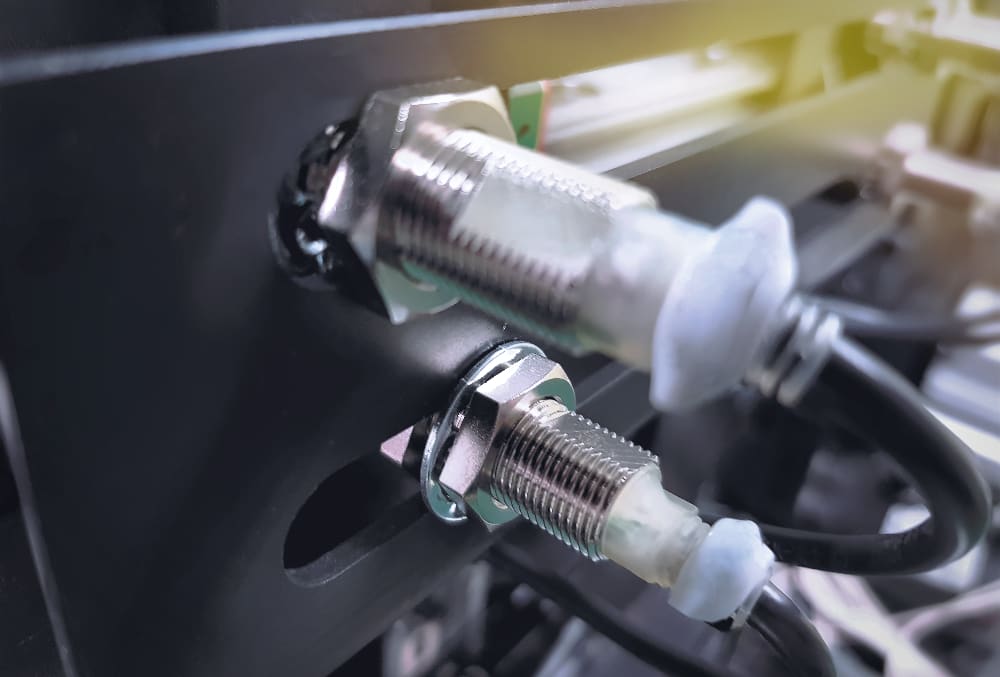- Published 8 Mar 2024
- Last Modified 8 Mar 2024
- 5 min
Railway Safety and Efficiency: A Guide to Proximity Sensors
Discover the transformative impact of inductive proximity sensors in the railway industry, setting new standards in reliability and performance.

The integration of advanced sensor technology signifies a pivotal shift in the railway industry, enhancing safety protocols and operational efficiencies. Inductive proximity sensors, in particular, have become crucial in modern rail systems, underscoring the industry's dedication to harnessing technological innovations for a safer and more reliable network.
Safety, the foremost priority in train operations, necessitates such advancements to mitigate risks and prevent incidents. These inductive switch sensors not only bolster safety measures by providing precise detection and data but also streamline operations, contributing to the reliability and punctuality of services. Their adoption reflects a strategic move towards a future where rail transport is both safer and more efficient, demonstrating a commitment to continuous improvement and public trust in the Australian railway systems.

Understanding Inductive Proximity Sensors
Inductive proximity sensors operate through a sophisticated yet straightforward mechanism that has revolutionised safety and operational procedures in the railway industry. These devices generate an electromagnetic field to detect the presence of metallic objects, such as train components or track obstructions, without requiring any physical contact.
The robust nature of these sensors, capable of enduring the harsh conditions typical of outdoor railway settings, ensures their reliability over extended periods. This durability is critical for applications where sensor failure could lead to operational delays or safety risks.

What is the Role of Inductive Proximity Sensors?
Inductive proximity sensors excel in a variety of critical functions within the railway sector, each contributing to the overarching goals of safety and efficiency.
1. Train Position Detection and Safety
In the labyrinth of rail networks, the precise detection of train positions is fundamental to avoiding collisions and ensuring seamless transit flows. Inductive proximity sensors are instrumental in this regard, providing real-time data that enhances signalling systems and supports effective collision avoidance strategies.
2. Speed Measurement and Regulation
The meticulous measurement and regulation of train speeds are vital for maintaining scheduled services and safeguarding passengers. Through the adept detection of speed, these sensors inform control systems to adjust velocities, ensuring adherence to safe operational parameters.
3. Wheel Detection for Accurate Train Positioning
The precise positioning and tracking of trains in the Australian railway network has markedly improved through wheel detection technology, which is further enabled by the capabilities of inductive proximity sensors. Besides location tracking, wheel detection also plays a significant role in the broader spectrum of railway management.
Effective wheel detection allows for more precise scheduling and positioning of trains, ensuring that assets, such as locomotives and carriages, are deployed where they are most needed. This optimisation of resource allocation not only boosts the operational capacity of the railway network but also minimises delays and maximises the throughput of the system.
4. Enhancing Railway Crossing Safety
At the intersection of road and rail, safety is paramount. Inductive switch sensors are instrumental in this aspect, as they detect the approaching train and subsequently activate warning systems—such as lights and alarms—and control barriers at crossings. This timely activation alerts both pedestrians and vehicle drivers to the imminent arrival of a train, allowing them sufficient time to stop safely. Furthermore, by lowering barriers, these sensors effectively prevent vehicles or pedestrians from inadvertently crossing the train tracks, thus averting potential accidents and safeguarding the lives of train workers and passengers as well as road users.
5. Proactive Maintenance Through Track Inspection
The adoption of these sensors in automated inspection systems exemplifies a proactive approach to maintenance. By facilitating early detection of track irregularities, they enable preventative measures, reducing downtime and enhancing the longevity of rail infrastructure.
6. Improving Passenger Safety with Door Sensors
Passenger safety is further augmented by the application of these sensors in train door control systems. By ensuring the secure operation of doors, they play a critical role in protecting passengers during boarding and disembarking, highlighting the comprehensive safety enhancements achieved through sensor technology.
Revolutionising Rail with Sensor Technology
The pivotal role of inductive proximity sensors in augmenting railway safety and efficiency cannot be overstated. Their diverse applications, from enhancing signalling systems to improving crossing safety and facilitating proactive maintenance, underscore the transformative impact of sensor technology on the railway industry. As we advance, the continued exploration and adoption of such technologies promise to further revolutionise railway operations, ensuring safer and more efficient travel for all.
When it comes to industrial automation and safety, certain brands have set themselves apart through innovation, reliability, and a comprehensive range of products. Among these, three brands stand out for their exceptional contributions to the development and application of inductive proximity sensors:
Popular Inductive Proximity Sensor Brands
OMRON
As a global leader in automation technology, OMRON excels across various business fields, from industrial automation to healthcare, providing cutting-edge solutions in over 130 countries. Their dedication to innovation is evident in their wide array of inductive proximity sensors designed to meet the diverse needs of modern industries.
Telemecanique Sensors
Telemecanique Sensors, recognised worldwide, specialises in a vast selection of sensing products, offering over 25,000 types of sensors. Their portfolio includes everything from limit and pressure switches to sophisticated photo-electric, ultrasonic, and inductive proximity sensors, catering to a wide range of industrial applications.
Carlo Gavazzi
With a rich history spanning 90 years, Carlo Gavazzi has established itself as a key international player in the design, manufacture, and marketing of electronic equipment. Their commitment to quality and innovation has made them a preferred choice for professionals seeking reliable electronic solutions, including inductive proximity sensors.